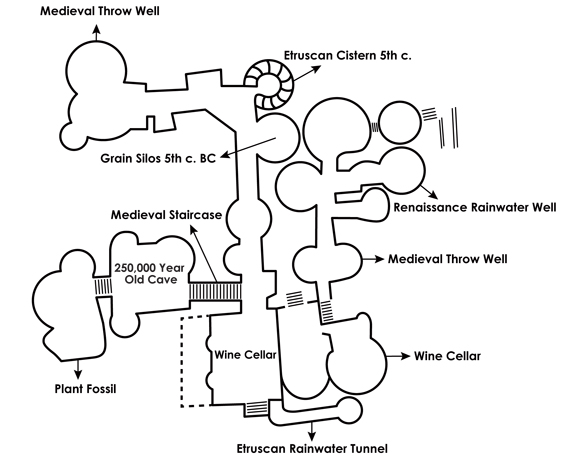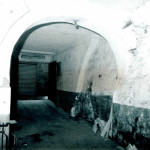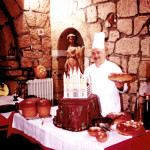The Etruscan's
The mysterious Etruscan people lived in Orvieto for more than seven centuries, leaving an indelible mark, still clearly visible in the labyrinth.
Orvieto's ancient origins
Between the small towns of Italy is considered a jewel of culture, history, archaeology. Witness and protagonist of a mysterious past.
Located above a tufa rock known as "La Rupe" the citadel was home to the Etruscan civilization from the eighth century BC and eventually became in 265 BC an integral part of the Roman state.
The Etruscan's were able to create a vast domain organized jointly with high manifestations of civil coexistence and social commerce playing a large roll in controlling roads and crossings.
The Etruscans, masters of hydraulics, they built wells and cisterns (two types: with and without plaster) to ensure water supply to the house, the shops and distribution in the various sacred areas.
Those devoid of plaster are made without the use of any type of waterproofing inside them, their construction is related to the geological condition of the soil in which they are dug.

MAP OF THE LABIRINTO DI ADRIANO
The plastered tanks however, are artifacts of cylindrical shape slightly flared: the inner wall is constituted by a waterproof plaster obtained by kneading white lime, pozzolan and clay while the ceiling, in contrast, presents no plaster but is mainly dug into the tuff rock.
The excavation of tunnels and wells procured the material for the construction of the city above.
It was in the twelfth century that the city strengthened its political influence and reached the pinnacle of glory.
During that time, at the behest of the people, the wonderful treasure trove of valuable works of art that is the Duomo was constructed.
During the Middle Ages, they once again had the problem of water supply.
For reasons of public and private hygiene it was codified in the statutes of the common medieval prohibition to throw garbage on the streets. At the famous "throw", underground rooms of the cubic form almost always dug the corners of the rooms at the perimeter walls of the same.
The underground rooms were used as garbage dumps where there was thrown all sorts of household waste: animal bones, pottery and broken glass, tiles, tuff, debris, etc... Some small Etruscan wells and cisterns were then adapted as "throws".
The succession of earthquakes and the plague of 1348, led to the end of wells and cisterns: the decay of the water was the definitive cause of the transformation of water into containers throw.
Today Orvieto is a quiet town that among the alleys and stones still retains its ancient culture, the story of its mysterious past and gives to those who love testimonies of time dream like scholars and enthusiasts of ancient remains.
Between the Duomo and the Well of St. Patrick (VIII cent. AD), Adriano Di Mario passionate about archeology, discovered and restored after many years of excavations old trenches, pits silos, wells cisterns, and throw wells.
The visitors, on their way to Rome or Florence or otherwise attracted to the art and history of Orvieto gladly visit an unprecedented edge of the underground city.
A tour of the caves, the welcoming reception, and possibility of food tasting for visitors will leave a lasting impression.


